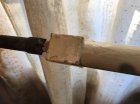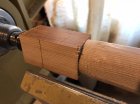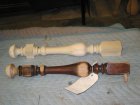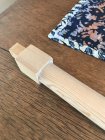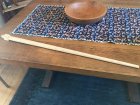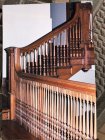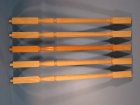- Joined
- Jul 18, 2018
- Messages
- 1,352
- Likes
- 2,930
- Location
- Baltimore, MD
- Website
- loujacobswoodturning.com
I’m turning replacement spindles/balusters for a stair rail. I need to transition from square to round, and am having trouble not getting splintering in the square portion. Below are pictures of the original I’m duplicating, and the beginning of my turning with a bit of splintering. The stock I’m turning is very old and dry fir. I’ve ripped the turning blanks from a bed I made my daughter 35 years ago. Too dry? I have tried sneaking up on it with a spindle gouge, used a parting tool, and even came into it with a skew. I’ve tried cutting a bit off the corners with a fine toothed saw, but am having trouble in each case. I’d love some suggestions!